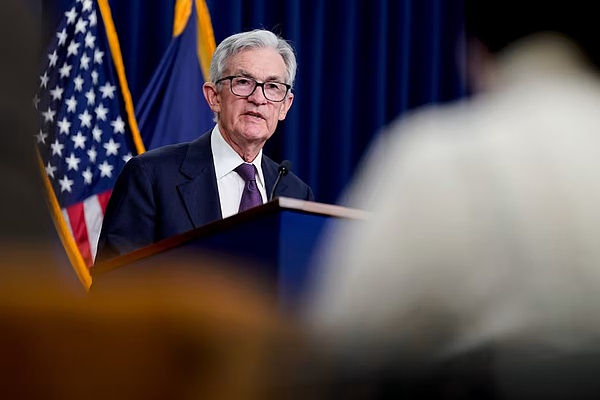Source: Barron's Chinese
The anti-inflation process has stalled, while a number of congressional agendas under Republican control will further push up inflation.
Federal Reserve officials debated the continued inflation at their December 2024 meeting, while offering a range of views on where interest rates will be in 2025. Officials stressed that the Fed does not set policy in advance and needs to adjust based on economic data and the policies of the Trump administration.
The minutes of the Fed meeting released on Wednesday (January 8) mentioned that "participants expect inflation to continue to fall back toward 2%, but they believe that recent higher-than-expected inflation data and the impact of potential changes in trade and immigration policies mean that this process may be longer than previously expected. Some participants believe that the anti-inflation process may have temporarily stalled, and others pointed out possible risks."
The Federal Open Market Committee (FOMC) lowered the target range of the federal funds rate by 25 basis points to 4.25%-4.5% for the third consecutive time at its meeting held from December 17 to 18 last year. Officials also signaled that future rate cuts will be slower due to persistent inflation, still-growing U.S. economy and uncertainty over fiscal policy.

The updated Summary of Economic Projections shows that the median estimate of the target range for the federal funds rate by the end of 2025 is 3.75%-4%, 50 basis points lower than the current level. Prior to this, Fed officials had expected a 100 basis point rate cut in 2025.
The minutes showed: "Many participants believed that monetary policy decisions must be cautious in the coming quarters due to factors such as recent warming inflation data, still strong consumer spending, reduced downside risks to the outlook for the labor market and economic activity, and increased upside risks to inflation."
Fed officials expect inflation to continue to be higher than previously expected in 2025, and the inflation rate at the end of this year will be 2.5%, measured by the price indicator that the Fed pays the most attention to. They also expect the unemployment rate to rise slightly this year, but the rate of increase will be slower than before. December employment data will be released this Friday (January 10).
Fed officials are more optimistic about the overall economic situation in the United States. The minutes showed: "Participants noted that economic activity continued to expand at a solid pace, and overall, recently released economic activity and consumer spending data were stronger than expected. Participants believed that a strong labor market, rising real wages and increased household net worth supported consumption." The Republican Party will control Congress for at least the next two years, and its agenda focuses on restricting immigration, lowering taxes and easing regulations, and imposing tariffs on trading partners. Many of the policies proposed by President-elect Trump may push up inflation while promoting economic growth. The minutes showed: "All participants believed that these policies would bring potential changes to foreign trade and immigration policies, and there was great uncertainty about the scope, implementation time and impact of the policies on the economy." The decision to cut interest rates by 25 basis points on December 18, 2024 was not unanimously passed. Beth Hammack, president of the Federal Reserve Bank of Cleveland, voted against it. She wanted to keep interest rates unchanged. Hammack will no longer have a vote in 2025, when four new regional Fed presidents will take turns voting, and some of them are skeptical of further rate cuts.
The minutes showed: "Some participants believed that the Fed should maintain the target range for the federal funds rate unchanged, noting that the risk of continued inflation has increased in recent months, and several participants emphasized that in order to create a financial environment that allows inflation to continue to fall back toward 2%, it is necessary for the Fed to achieve this through monetary policy."
The November inflation data released after the December 2024 meeting was weaker than expected, but still well above the 2% target level.
The next Fed meeting will be held on January 28-29, and employment and inflation data for December last year will be released before the meeting. The trend of the interest rate futures market on Wednesday showed that the probability of the Fed cutting interest rates this month was less than 5%, and the probability of only one 25 basis point rate cut in 2025 was the highest.
 Anais
Anais






